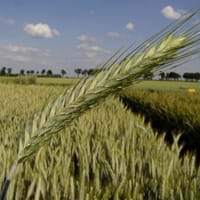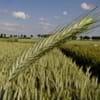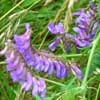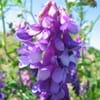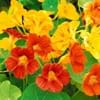Life Span
Annual
Perennial
Origin
Hybrid origin
China
Types
Not Available
Not Available
Habitat
Cultivated Beds
Forest margins, gardens, Grassland, Tropical regions
USDA Hardiness Zone
2-11
8-15
AHS Heat Zone
10 - 2
12 - 1
Sunset Zone
A3, H1, 1a, 1b, 2a, 2b, 3a, 3b, 4, 5, 6, 7, 8, 9, 12, 13, 14, 15, 16, 17, 18, 19, 20, 21, 22, 23, 24
H1, H2, 8, 9, 14, 15, 16, 17, 18, 19, 20, 21, 22, 23, 24
Habit
Upright/Erect
Clump-Forming
Minimum Width
Not Available
Flower Color
Yellow
Not Available
Flower Color Modifier
Bicolor
Bicolor
Fruit Color
Light Green, Tan, Sandy Brown
Not Available
Leaf Color in Spring
Green, Light Green
Light Green, Dark Green
Leaf Color in Summer
Green
Light Green
Leaf Color in Fall
Yellow green, Tan
Light Green, Dark Green
Leaf Color in Winter
Light Green
Light Green, Dark Green
Leaf Shape
Lobed
Grass like
Plant Season
Summer, Fall
Spring, Summer, Fall, Winter
Sunlight
Full Sun
Full Sun, Partial Sun, Partial shade
Type of Soil
Loam, Sand
Loam, Sand
The pH of Soil
Acidic, Neutral
Acidic, Neutral, Alkaline
Soil Drainage
Well drained
Average
Bloom Time
Late Spring, Early Summer
Not Available
Tolerances
Drought
Drought
Where to Plant?
Ground
Ground, Pot
How to Plant?
Seedlings
Seedlings, Transplanting
Plant Maintenance
Medium
Medium
Watering Requirements
Medium
Keep the ground moist but not water-logged, Requires regular watering, Use and maintain water-efficient soaker hoses, Use Mulches to help prevent water loss during hot and windy weather, Water every two or three days during warmer months, Water twice a day in the initial period
In Summer
Lots of watering
Lots of watering
In Spring
Moderate
Moderate
In Winter
Average Water
Average Water
Soil pH
Neutral
Acidic, Neutral, Alkaline
Soil Type
Loam
Loam, Sand
Soil Drainage Capacity
Well drained
Average
Sun Exposure
Part sun
Full Sun, Partial Sun, Partial shade
Pruning
Remove damaged leaves, Remove dead branches, Remove dead leaves
Remove damaged leaves, Remove dead branches, Remove dead leaves
Fertilizers
All-Purpose Liquid Fertilizer
All-Purpose Liquid Fertilizer
Pests and Diseases
Red blotch
Red blotch
Plant Tolerance
Drought
Drought
Flower Petal Number
Single
Single
Fragrant Bark/Stem
Yes
No
Foliage Texture
Coarse
Medium
Foliage Sheen
Matte
Matte
Allergy
Not Available
no allergic reactions
Aesthetic Uses
Farmland
Beautification
Beauty Benefits
Not Available
Not Available
Environmental Uses
Air purification
Air purification
Medicinal Uses
Asthma, Bone disorders, Cellular Health, Diabetes, Digestion problems, Skin Disorders
Not Available
Part of Plant Used
Fibre
Whole plant
Other Uses
Animal Feed, Used for its medicinal properties
Culinary use, Used in construction, Used in Furniture, Used in making musical instruments, Used in paper industry
Used As Indoor Plant
No
No
Used As Outdoor Plant
Yes
Yes
Garden Design
Edible
Container, Feature Plant, Hedges, Screening / Wind Break, Tropical
Botanical Name
X TRITICOSECALE
BAMBUSA multiplex 'Alphonso-Karrii'
Common Name
Triticale
Alphonse Karr Bamboo, Clumping Bamboo, Hedge Bamboo
In Hindi
triticale
अल्फोंस Karr बांस
In German
Triticale
Alphonse Karr Bamboo
In French
triticale
Alphonse Karr Bamboo
In Spanish
triticale
Alphonse Karr Bambú
In Greek
τριτικάλε
Alphonse Karr Μπαμπού
In Portuguese
triticale
Alphonse Karr Bamboo
In Polish
pszenżyto
Alphonse Karr Bamboo
In Latin
Triticum
Alphonse Karr Bamboo
Phylum
Magnoliophyta
Not Available
Class
Liliopsida
Not Available
Genus
Triticosecale
Bambusa
Clade
Angiosperms, Commelinids, Monocots
Angiosperms, Commelinids, Monocots
Tribe
Triticeae
Bambuseae
Subfamily
Not Available
Bambusoideae
Number of Species
Not Available
Not Available
Season and Care of Triticale and Alphonse Karr Bamboo
Season and care of Triticale and Alphonse Karr Bamboo is important to know. While considering everything about Triticale and Alphonse Karr Bamboo Care, growing season is an essential factor. Triticale season is Summer and Fall and Alphonse Karr Bamboo season is Summer and Fall. The type of soil for Triticale is Loam, Sand and for Alphonse Karr Bamboo is Loam, Sand while the PH of soil for Triticale is Acidic, Neutral and for Alphonse Karr Bamboo is Acidic, Neutral, Alkaline.
Triticale and Alphonse Karr Bamboo Physical Information
Triticale and Alphonse Karr Bamboo physical information is very important for comparison. Triticale height is 91.40 cm and width 15.20 cm whereas Alphonse Karr Bamboo height is 460.00 cm and width Not Available. The color specification of Triticale and Alphonse Karr Bamboo are as follows:
Triticale flower color: Yellow
Triticale leaf color: Green and Light Green
Alphonse Karr Bamboo flower color: Not Available
- Alphonse Karr Bamboo leaf color: Light Green and Dark Green
Care of Triticale and Alphonse Karr Bamboo
Care of Triticale and Alphonse Karr Bamboo include pruning, fertilizers, watering etc. Triticale pruning is done Remove damaged leaves, Remove dead branches and Remove dead leaves and Alphonse Karr Bamboo pruning is done Remove damaged leaves, Remove dead branches and Remove dead leaves. In summer Triticale needs Lots of watering and in winter, it needs Average Water. Whereas, in summer Alphonse Karr Bamboo needs Lots of watering and in winter, it needs Average Water.
